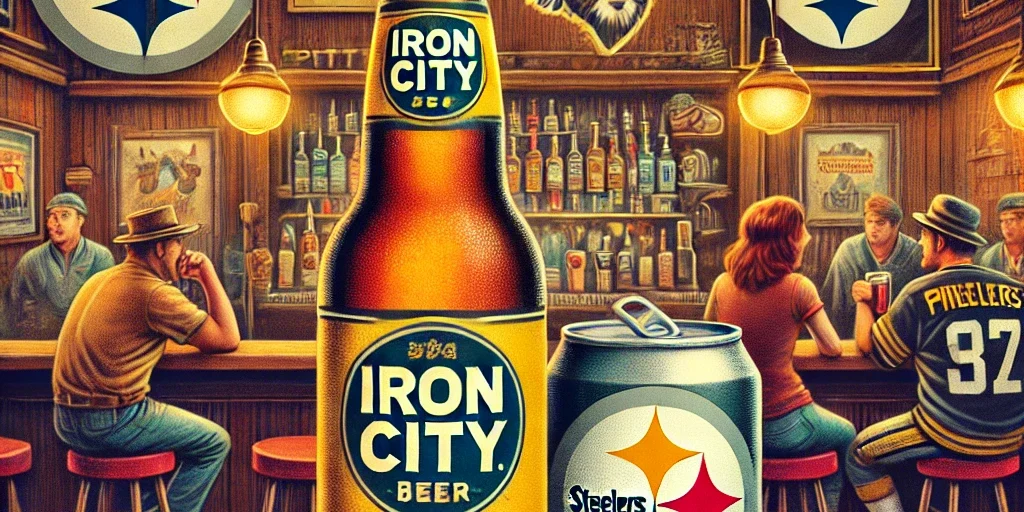Brewing Beginnings: The Birth of Iron City Beer
Pittsburgh’s blue-collar roots run deep, and so does its beer. Long before craft breweries dotted the city’s landscape, one name stood above the rest: Iron City Beer. Brewed for over 160 years, this iconic Pittsburgh lager has been a staple in bars, ballparks, and steel mills alike. It is more than just a beer—it is a symbol of the city’s grit, perseverance, and unwavering loyalty.
The story begins in 1861, when a German immigrant named Edward Frauenheim established the Iron City Brewery in Pittsburgh’s Lawrenceville neighborhood. He brought with him the time-honored brewing traditions of his homeland, crafting a crisp, refreshing lager that quickly gained popularity. At a time when most Americans drank heavy ales and porters, Iron City was a revelation—a lighter, more drinkable beer that suited the working-class men laboring in Pittsburgh’s steel mills and factories.
Innovation in a Bottle
Iron City was not just any beer; it was a pioneer in brewing innovation. In 1873, it became one of the first American breweries to adopt mechanical refrigeration, allowing for more consistentiron brewing and storage. The brewery also embraced pasteurization, which extended the beer’s shelf life and made distribution more reliable.
But perhaps its most significant breakthrough came in 1962, when Iron City became the first U.S. brewery to package beer in aluminum cans. This was a game-changer—not only was aluminum lighter and cheaper than steel, but it also kept beer fresher and was easier to recycle. The move cemented Iron City’s reputation as an industry innovator, even as bigger brands began to dominate the national market.
The Beer of the People
For decades, Iron City Beer was synonymous with Pittsburgh’s working class. Millworkers would stop at bars for an “Iron” after grueling shifts. It was the drink of choice at Steelers tailgates, Pirates games, and backyard gatherings. The beer became so ingrained in local culture that it was often seen as a badge of Pittsburgh pride—if you were from the city, you drank Iron City.
The brand’s marketing embraced this identity. Slogans like “The Official Beer of the Pittsburgh Nation” reinforced its status as the hometown brew. The brewery even introduced sports-themed cans, featuring the Steelers, Penguins, and Pirates, further solidifying its connection to the city’s legendary sports teams.
The Struggles of an Icon
Despite its deep roots, Iron City Beer faced mounting challenges in the late 20th century. As national beer giants like Budweiser and Miller expanded, smaller regional breweries struggled to compete. Financial troubles led to a series of ownership changes, and the brewery was forced to relocate multiple times, moving from its original Lawrenceville location to a facility in Latrobe in 2009.
Many feared that Iron City Beer might not survive. Loyal fans watched as the brand changed hands, worried that it would lose its identity. Yet, against the odds, the beer endured, kept alive by a fiercely dedicated customer base that refused to let their hometown brew fade into history.
A Resurgence of Steel City Suds
In recent years, Iron City Beer has experienced a revival. Under new ownership, the brand has leaned into its legacy while embracing modern brewing trends. The brewery has reintroduced classic recipes, launched limited-edition runs, and focused on keeping the beer authentically Pittsburgh.
Today, Iron City Beer remains a staple in bars and homes across Western Pennsylvania. It has become a nostalgic favorite, a reminder of Pittsburgh’s industrial heyday, and a toast to the city’s resilience. Whether cracked open at a Pirates game, enjoyed at a neighborhood dive bar, or sipped on a porch overlooking the three rivers, Iron City Beer continues to be a unifying symbol of the Steel City spirit.
A Legacy Poured in Every Glass
Few beers can claim the kind of cultural significance that Iron City Beer holds in Pittsburgh. It has survived wars, Prohibition, economic downturns, and industry collapses. While the steel mills may be gone, Iron City Beer remains—a liquid time capsule of Pittsburgh’s working-class soul.
So the next time you raise a can of Iron City, remember: you’re not just drinking a beer. You’re drinking history.









